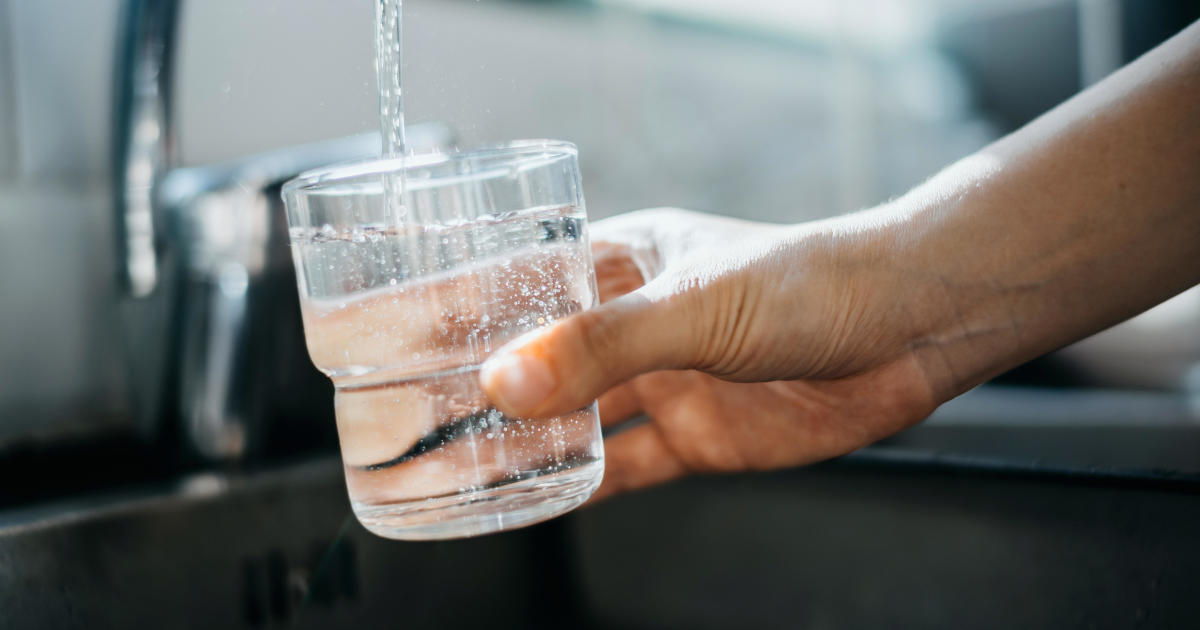EPA announces first-ever national regulations for “forever chemicals” in drinking water
EPA announces first-ever national regulations for "forever chemicals" in drinking water CBS News


Environmental Protection Agency Announces National Regulation on PFAS in Drinking Water

For the first time ever, the Environmental Protection Agency (EPA) has announced a national regulation to limit the presence of certain per- and polyfluoroalkyl substances (PFAS) in drinking water.
Background
PFAS, commonly known as “forever chemicals,” are synthetic chemicals found in air, water, and soil. They are resistant to breaking down in the environment and can persist for thousands of years.
New Regulation and Impact
The EPA has acknowledged that there is no safe level of exposure to PFAS without health risks. The new regulation will require public water utilities to test for six different types of PFAS chemicals in order to reduce exposure in drinking water. It is estimated that this will reduce PFAS exposure for 100 million people and prevent thousands of deaths and illnesses.
Funding and Support
To assist public water utility companies in complying with the new standards, the EPA is making $1 billion available to states and territories for PFAS testing and treatment at public water systems. This funding is part of a $9 billion investment made possible by the 2021 Bipartisan Infrastructure Law, aimed at assisting communities impacted by PFAS contamination.
Government Response
EPA Administrator Michael S. Regan stated, “Drinking water contaminated with PFAS has plagued communities across this country for too long.” Brenda Mallory, Chair of the White House Council on Environmental Quality, added that President Biden is committed to providing clean and safe drinking water for all.
Health Risks and Concerns
Research has confirmed that exposure to certain levels of PFAS can lead to various health issues, including reproductive problems, developmental delays in children, suppressed immune system, increased cholesterol levels, impacts to the cardiovascular system, and certain types of cancer.
Criticism and Future Considerations
Critics argue that the EPA’s regulation falls short as it only regulates six out of more than 15,000 PFAS chemicals. Some experts suggest addressing PFAS as a whole class of chemicals and questioning the necessity of their use.
Implementation and Costs
Approximately 6% to 10% of the 66,000 public water utility systems impacted by the regulation may need to take action to comply. Operators will have three years to test for PFAS pollution and an additional two years to install necessary technology for treating contaminated water. The EPA estimates that the cost of treating all affected water will be around $1.5 billion.
Accountability and Settlements
The new regulations place the responsibility of clean-up on water utility companies, while doing little to hold polluters accountable for the damage caused by PFAS. Several major settlements have been reached in recent years by chemical companies over PFAS contamination.
Protecting Yourself
To limit exposure to PFAS in drinking water, individuals can inquire about their water utility’s testing methods or have their water tested by a state-certified laboratory. There are also various technologies available for filtering PFAS from home water sources. Additionally, there are lists available to track companies that have banned PFAS from their products.
Conclusion
The EPA’s national regulation on PFAS in drinking water marks a significant step towards addressing the issue of PFAS contamination. However, further efforts are needed to regulate the entire class of PFAS chemicals and hold polluters accountable for their actions.
More from CBS News
SDGs, Targets, and Indicators
-
SDG 6: Clean Water and Sanitation
- Target 6.1: By 2030, achieve universal and equitable access to safe and affordable drinking water for all.
- Target 6.3: By 2030, improve water quality by reducing pollution, eliminating dumping and minimizing release of hazardous chemicals and materials, halving the proportion of untreated wastewater, and increasing recycling and safe reuse globally.
- Indicator 6.1.1: Proportion of population using safely managed drinking water services.
- Indicator 6.3.2: Proportion of bodies of water with good ambient water quality.
-
SDG 3: Good Health and Well-being
- Target 3.9: By 2030, substantially reduce the number of deaths and illnesses from hazardous chemicals and air, water, and soil pollution and contamination.
- Indicator 3.9.1: Mortality rate attributed to household and ambient air pollution.
- Indicator 3.9.2: Mortality rate attributed to unsafe water, unsafe sanitation, and lack of hygiene.
Table: SDGs, Targets, and Indicators
| SDGs | Targets | Indicators |
|---|---|---|
| SDG 6: Clean Water and Sanitation |
|
|
| SDG 3: Good Health and Well-being |
|
|
Analysis
1. Which SDGs are addressed or connected to the issues highlighted in the article?
The issues highlighted in the article are connected to SDG 6: Clean Water and Sanitation and SDG 3: Good Health and Well-being.
2. What specific targets under those SDGs can be identified based on the article’s content?
Based on the article’s content, the specific targets under SDG 6 are:
– Target 6.1: By 2030, achieve universal and equitable access to safe and affordable drinking water for all.
– Target 6.3: By 2030, improve water quality by reducing pollution, eliminating dumping and minimizing release of hazardous chemicals and materials, halving the proportion of untreated wastewater, and increasing recycling and safe reuse globally.
The specific target under SDG 3 is:
– Target 3.9: By 2030, substantially reduce the number of deaths and illnesses from hazardous chemicals and air, water, and soil pollution and contamination.
3. Are there any indicators mentioned or implied in the article that can be used to measure progress towards the identified targets?
Yes, there are indicators mentioned or implied in the article that can be used to measure progress towards the identified targets.
For SDG 6:
– Indicator 6.1.1: Proportion of population using safely managed drinking water services.
– Indicator 6.3.2: Proportion of bodies of water with good ambient water quality.
For SDG 3:
– Indicator 3.9.1: Mortality rate attributed to household and ambient air pollution.
– Indicator 3.9.2: Mortality rate attributed to unsafe water, unsafe sanitation, and lack of hygiene.
These indicators can be used to measure progress towards achieving the targets related to clean water, water quality, and reducing deaths and illnesses from pollution and contamination.
4. Table: SDGs, Targets, and Indicators
| SDGs | Targets | Indicators |
|---|---|---|
| SDG 6: Clean Water and Sanitation |
|
|
| SDG 3: Good Health and Well-being |
|
|








